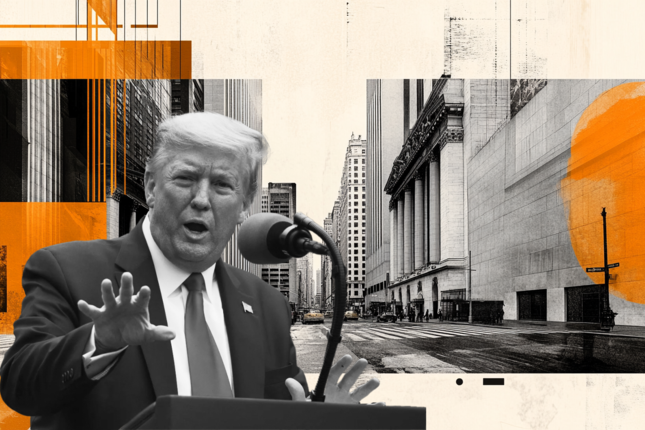On February 24, U.S. President Joe Biden signed an executive order requiring U.S. federal government agencies to complete supply chain risk assessments of four key products which include semiconductors, drugs and pharmaceutical ingredients, rare earths and other key minerals, as well as high-capacity batteries within 100 days. These agencies will be required to evaluate and submit a report on policy recommendations. The executive order also requires that the supply chain risk assessment of six key industries in the United States to be completed within one year. These six key industries include defense, public health, information and communication technology, energy, transportation, as well as agricultural and food production industries.
The aim of this executive order is to address the vulnerabilities and risks faced by the U.S. supply chain. These are not only national security considerations, but also industrial and economic security concerns. At the beginning of February this year, Biden said that his team was working hard as the U.S. will be in the state of "extreme competition" with China. Some analysts believe that in recent years, both the U.S. defense community, as well as the Democrat and Republican politicians have emphasized that the U.S. dependence on China's rare earth resources is a potential strategic trap, therefore the U.S. may turn to diversifying supply chains in order to avoid possible risks. A White House official revealed that after the assessment is completed, the U.S. government may introduce related policies, which could very well include measures on economic incentives and tariffs, and may also comprise of adjustments to procurement policies.
It is rather ironic that United States, which once imposed sanctions in the global chip market and vehemently restricted the activities of Chinese companies, is now beginning to be wary of a chip supply chain crisis.
White House spokesperson Jen Psaki recently confirmed that Brian Deese, Director of the National Economic Council, had sent a letter to Taiwan, hoping to solve the automotive chip shortage. Reuters reported that Deese had sent a letter to Wang Mei- hua, the head of Taiwan’s Economic Affairs, thanking Taiwan for its efforts in helping to solve the shortage of automotive semiconductors in the United States. Other than Deese, U.S. National Security Advisor Jake Sullivan has also started to take actions. According to reports, after Deese and Sullivan met with U.S. automobile dealers and suppliers, the U.S. officially sought the assistance of Taiwan. The U.S. auto industry is currently relying on the White House to urge foreign chip manufacturers and foreign governments for supplies. It has also been reported that the U.S. economic and national security team has directly contacted manufacturers in Taiwan.
ANBOUND’s researchers believe that the United States’ dilemma stems from an underestimation of the industrial division of labor under globalization. Statistics from the Boston Consulting Group (BCG) show that the United States has a relatively high share of 85% and 50% in semiconductor software design and equipment manufacturing respectively, but only a 12% in production share. Although the United States has companies such as Intel and Qualcomm among others which appear to be strong globally, it is still reliant on overseas companies such as the Taiwan Semiconductor Manufacturing Company (TSMC) and South Korea's Samsung Electronics in terms of production. The Semiconductor Industry Association (SIA) also estimates that 80% of the world's chip production capacity is concentrated in East Asia. According to The Economist, in the twentieth century, the biggest bottleneck of the global economy was in the Strait of Hormuz between Iran and Oman, where one- third of the world’s liquefied natural gas and 20% of crude oil was exported from, making it an important strategic position in international trade. In the 21st century, Taiwan and South Korea will become the Strait of Hormuz of the 21st century due to their chip production capacity.
The Economist’s metaphor accurately grasps the key to the problem. This is exactly the point that ANBOUND has always been emphasizing, i.e., geopolitics is profoundly affecting the global economy and industrial development, and geo- economics is becoming a new feature as well as a new tool in today’s world economy.
However, even as the biggest driver of geopolitical and geo-economic issues, the U.S. will not be able to change the current global industrial layout and supply chain structure easily. The formation of the global industrial division of labor and supply chain is the result of the development and evolution of the globalization process over the past few decades. In the chip industry, because of its geopolitical purposes, the U.S. government once hoped that through technological control and hegemonic sanctions, it would be able to force China and the global market to "submit". In the past few years, the U.S. government's measures could still play a significant role. However, under the full impact of the COVID-19 pandemic, the global market's demand for chips has grown significantly. As a result, chip production capacity has become unprecedentedly tight, as the global electronics industry has begun to compete for the limited chip production capacity.
The sudden and new changes in the market situation have disrupted the U.S. government’s sanctions, and now the U.S. itself is also at risk due to limited chip production capacity. Moody's has estimated that the shortage of chip supply will cause General Motors and Ford Motor Company's profits this year to drop by about one- third, which would severely erode their profit margins. The industry generally estimates that even if things carry on smoothly, it will take several years for new semiconductor production capacity to be established. If the chip production capacity problem cannot be resolved, the U.S. sanctions will not only aggravate chaos in the market but also without producing much further desired effects. More importantly, chip giants such as Intel and Qualcomm would be unable to solve the problem of insufficient production capacity. Due to insufficient investment in the latest high-end chip production, Intel has begun to outsource part of its production capacity to TSMC. This trend is undoubtedly contrary to the direction of the efforts of the U.S. government.
Final analysis conclusion
On the whole, with the risks that the supply chain faces, the U.S. administration will need to take measures to counter them. However, if the vital U.S. manufacturing industry is to be rejuvenated, geopolitical recommendations alone cannot solve the problem, neither can mere injections of capital be the solution. As such, it is extremely difficult for the United States to reverse the passive situation in the industrial layout and supply chain within a short period of time.
The information provided herein is derived from publicly available information that we believe to be reliable, but ANBOUND and its affiliates make no express or implied commitment or warranty as to the accuracy and completeness of the quoted information. The contents, views, analysis and conclusions of this article are for reference only and do not represent any inclination. ANBOUND and its affiliates do not accept any liability (whether direct, indirect or incidental) for any third party's acts or omissions in using this article and information. For specific suggestions or for more information on the content of this article, please contact the customer service staff of ANBOUND and its affiliated companies.
Recommended Content
Editors’ Picks

Gold falls amid a possible de-escalation of US-China tensions Premium
Gold pulled back from its all-time high of $3,500 per troy ounce reached earlier on Tuesday, as a resurgent US Dollar and signs of easing tensions in the US–China trade dispute appeared to draw sellers back into the market.

EUR/USD retreats to daily lows near 1.1440
EUR/USD loses the grip and retreats to the 1.1440 zone as the Greenback’s rebound now gathers extra steam, particulalry after some positive headlines pointing to mitigating trade concerns on the US-China front on Tuesday.

GBP/USD deflates to weekly lows near 1.3350
GBP/USD loses further momentum and recedes to the 1.3350 zone on Tuesday, or two-day troughs, all in response to the frmer tone in the US Dollar and encouraging news from the US-China trade scenario.

3% of Bitcoin supply in control of firms with BTC on balance sheets: The good, bad and ugly
Bitcoin disappointed traders with lackluster performance in 2025, hitting the $100,000 milestone and consolidating under the milestone thereafter. Bitcoin rallied past $88,000 early on Monday, the dominant token eyes the $90,000 level.

Five fundamentals for the week: Traders confront the trade war, important surveys, key Fed speech Premium
Will the US strike a trade deal with Japan? That would be positive progress. However, recent developments are not that positive, and there's only one certainty: headlines will dominate markets. Fresh US economic data is also of interest.

The Best brokers to trade EUR/USD
SPONSORED Discover the top brokers for trading EUR/USD in 2025. Our list features brokers with competitive spreads, fast execution, and powerful platforms. Whether you're a beginner or an expert, find the right partner to navigate the dynamic Forex market.